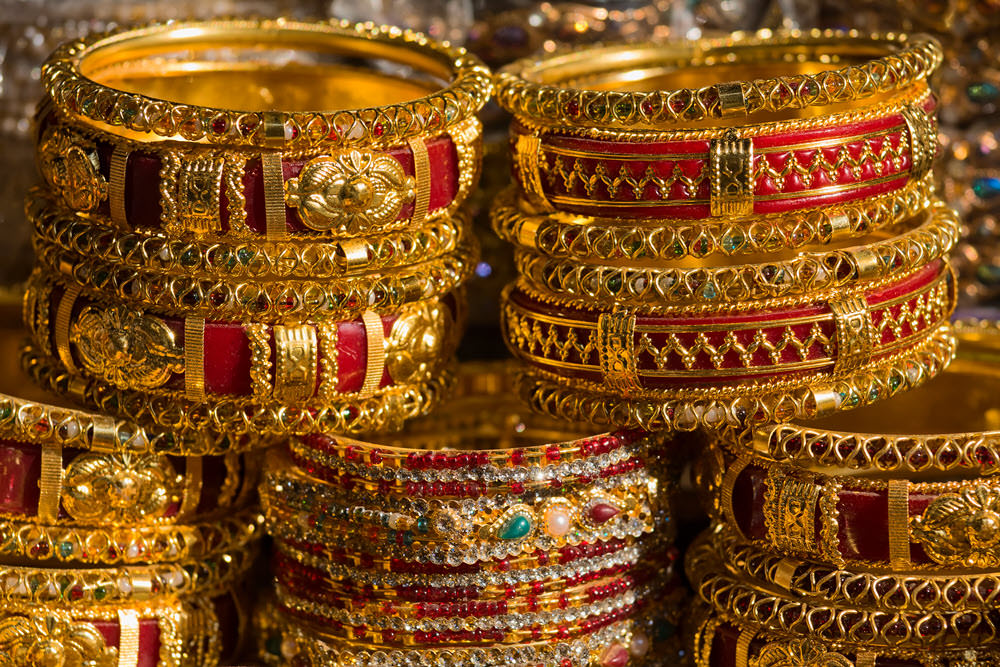Jewellery is important in India and is deeply interwoven in its culture. Indian jewellery made of bones, stones, and shells dates back more than 5000 years. India was one of the first countries to make jewellery from metals and gemstones and today, India is one of the largest consumers of gold in the world buying between 800 and 1000 tonnes a year. Why is there this demand? In India, as in many countries, gold is considered to be a symbol of wealth. However, as the predominant religion in India is Hinduism and gold features heavily in Hindu mythology, this helps to explain why India spent an estimated $55 billion on gold imports in 2021. Gold has played a very important role in Indian weddings for centuries with brides often wearing large quantities as headdresses, necklaces, bracelets, earrings and anklets.

As the number of weddings in India can vary year to year depending on how many auspicious dates there are, the global price of gold can be influenced by the number of weddings there are in India. Bear in mind that there can be more than 10 million weddings there a year! The weight of gold is measured in troy ounces (1 troy ounce = 31.1034768 grams), however its purity is measured in ‘carats’. ‘Caratage’ is the measurement of the purity of gold alloyed with other metals. Zinc, copper, nickel, iron, cadmium, aluminium, silver, platinum, and palladium are all common metals alloyed with gold. Gold and copper are the only two-coloured pure metals. Gold is yellow and copper is a reddish brown.
All other metals are white or grey in colour but have various effects on the colour of gold alloys. A gold-coloured alloy for jewellery will typically be one of three colours – yellow, white, or rose. 10k gold is harder, more durable, and less expensive but wearers can develop allergies to the alloy used. 14k gold has a yellow hue brighter than 10k but not as vibrant as 24k. It is made of 58.3% gold and 41.7% alloy. Jewellers like it for its balance of durability, affordability, and appearance. Most wedding bands are made of 14k gold. Since 18k gold, which is 75% gold and 25% alloy, can get scratched, it is more commonly used for earrings and necklaces. 24k gold, which is pure gold, is the softest and more often used to collect wealth. Diamonds were first mined, cut and polished in India.
The earliest reference to diamonds is in a Sanskrit manuscript dated from 320-296 BC. The tradition of giving a diamond engagement ring allegedly dates to 1477 when Archduke Maximillian of Austria gave a diamond ring to Mary of Burgundy. Until the 1730s India was the world’s only known source of diamonds. India is also famous for its precious gemstones such as sapphires, emeralds, and rubies and if you are visiting Jaipur as part of a ‘Golden Triangle’ tour, this is one of Asia’s gem centres. Indeed, since it was founded in 1727 by mathematician and astronomer Maharaja Jai Singh II, Jaipur has been a jewellery destination.
The ISHRS travel agent partner can recommend legitimate gem centres to visit where you can be confident any purchases are authentic and of high quality but also where you can learn more about the features of precious stones. Did you know that hair is 45% carbon and that you can actually turn hair into a diamond!
All the best,
Gregory Williams, MBBS, FISHRS
2023 Program Chair